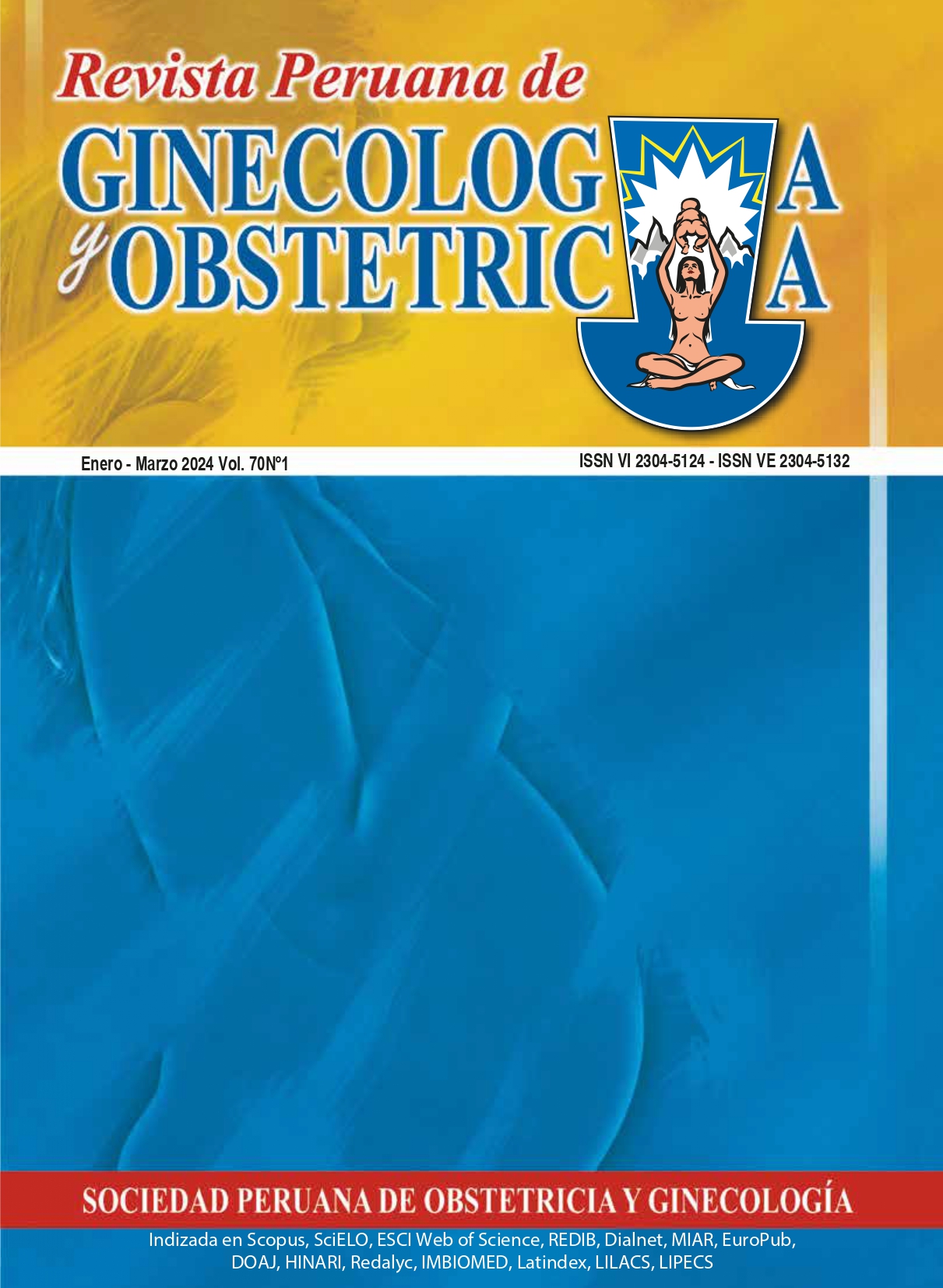Risk factors associated with cervical dysplasia in women treated in a Peruvian hospital
DOI:
https://doi.org/10.31403/rpgo.v70i2596Keywords:
Human papillomavirus 16, Risk factors, Multiple sexual partners, Squamous intraepithelial lesionsAbstract
Objective: To identify risk factors associated with cervical dysplasia in women older
than 17 years. Methods: Case-control investigation involving 105 women (35 cases
and 70 controls) in a regional hospital during the period January-December 2018. The
information was obtained from medical records, entered into the Epi Data version 4.6
and exported to SPSS version 26 for study. Multivariate logistic regression analysis
was performed, calculating odds ratios (OR) and 95% confidence intervals (95% CI).
A value of p < 0.05 was considered statistically significant. Results: Risk factors for
cervical dysplasia were identified as secondary educational status or lower (ORa =
17.2, 95% CI 1.7-176.5), number of partners greater than three (ORa = 11.7, 95% CI
1.5-94.9), multigestation (ORa = 17.9, 95% CI 1.1-29.6) and use of oral contraceptives
(ORa = 318.3, 95% CI 5.6-171.7). Conclusion: Secondary education or less, number
of partners greater than 3, being multigestational, and oral contraceptive use were
associated with an increased likelihood of having cervical dysplasia. Interventions
should be made to strengthen health education on sexual practices with information
on the desirability of early detection of cervical dysplasia.
Downloads
Downloads
Published
How to Cite
Issue
Section
License
Copyright (c) 2024 Jorge Ybaseta-Medina

This work is licensed under a Creative Commons Attribution 4.0 International License.
Esta revista provee acceso libre inmediato a su contenido bajo el principio de que hacer disponible gratuitamente la investigación al publico, lo cual fomenta un mayor intercambio de conocimiento global.















